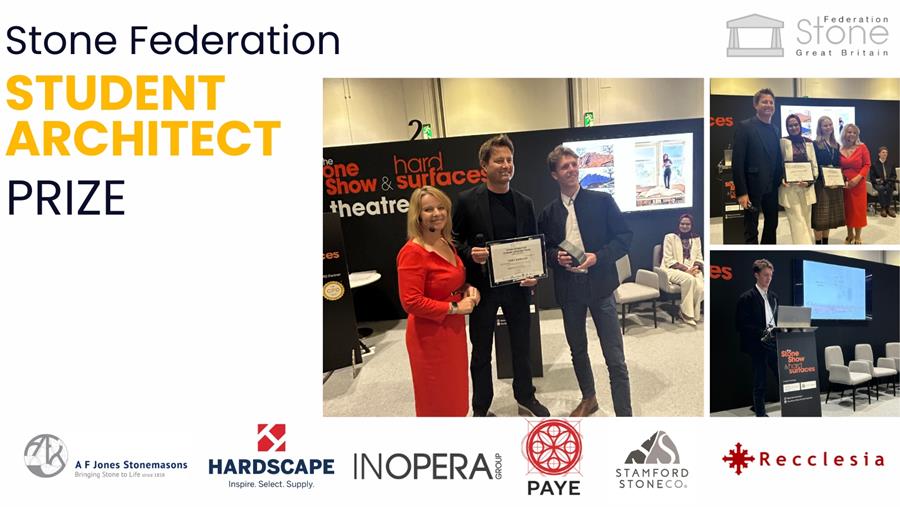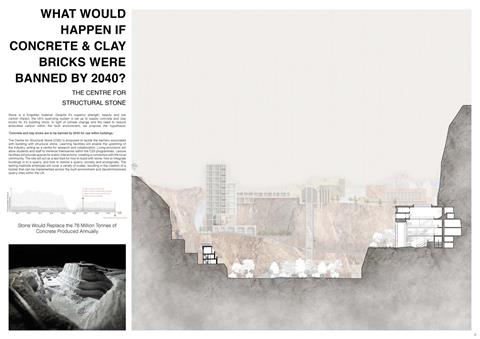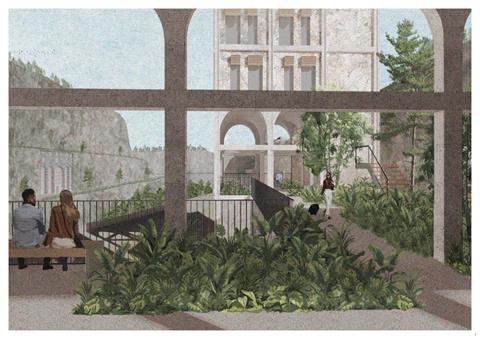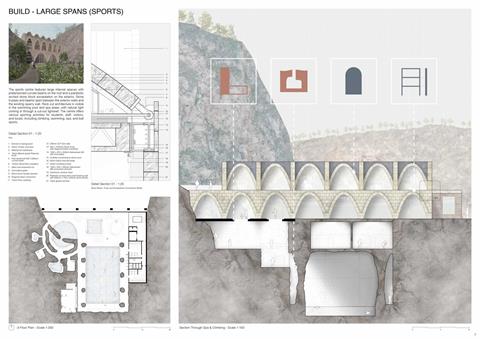
We are delighted to announce that the winner of the inaugural Stone Federation Student Architect Prize is Toby Barlow.
Toby was presented with his cash prize, trophy, and certificate by architect, TV presenter, and campaigner, George Clarke, at a ceremony at The Stone Show & Hard Surfaces last week.
Toby’s entry, Stone Reform (The Centre for Structural Stone), is a quarry design project creating practical guides for using stone in construction, fitting buildings into quarry landscapes, and making old quarries ecologically and socially beneficial.
Of the dozens of entries we received, our judges also wanted to recognise the projects of Sasha Farnsworth and Falak Fatima Syed, who were both commended.
We established this prize to recognise outstanding student projects that showcase the use of natural stone, and to support and encourage the next generation of architects to make good use of natural stone in construction.
This prize offers a platform for student projects that demonstrate a thorough understanding of natural stone and make a compelling case for its use and/or reuse.
A big thank you to our Stone Federation Student Architect Prize trophy sponsor, Hardscape Surfaces and prize sponsors, A F Jones Stonemasons, Hardscape, In Opera Group, Paye Stonework & Restoration Ltd, Stamford Stone Co. and Recclesia Ltd.

Stone Reform (The Centre for Structural Stone) by Toby Barlow
Stone is a forgotten material. Despite its superior strength, beauty and low carbon impact, the UK’s quarrying system is set up to supply concrete and clay bricks for its building stock, whilst stone is being used as part of metal cladding systems wasting its structural potential. In light of climate change and the need to reduce embodied carbon within the built environment, we propose the following hypothesis:
“The use of concrete and clay bricks in buildings will be banned by 2040”.

The Centre for Structural Stone (CSS) is proposed to tackle the barriers associated with building with structural stone. A centre for research and collaboration, its learning facilities will enable industry upskilling; living provisions will allow students and staff to form the immersive CSS community; and leisure facilities will provide spaces for interaction, creating connections with the local community. The site is a test bed for how to build with stone, how to integrate urban building types into a quarry, and how to restore a quarry – socially and ecologically. The testing methods employed cover a variety of scales, resulting in the creation of a new toolset that can be applied across decommissioned quarry sites, and the wider UK built environment.”


